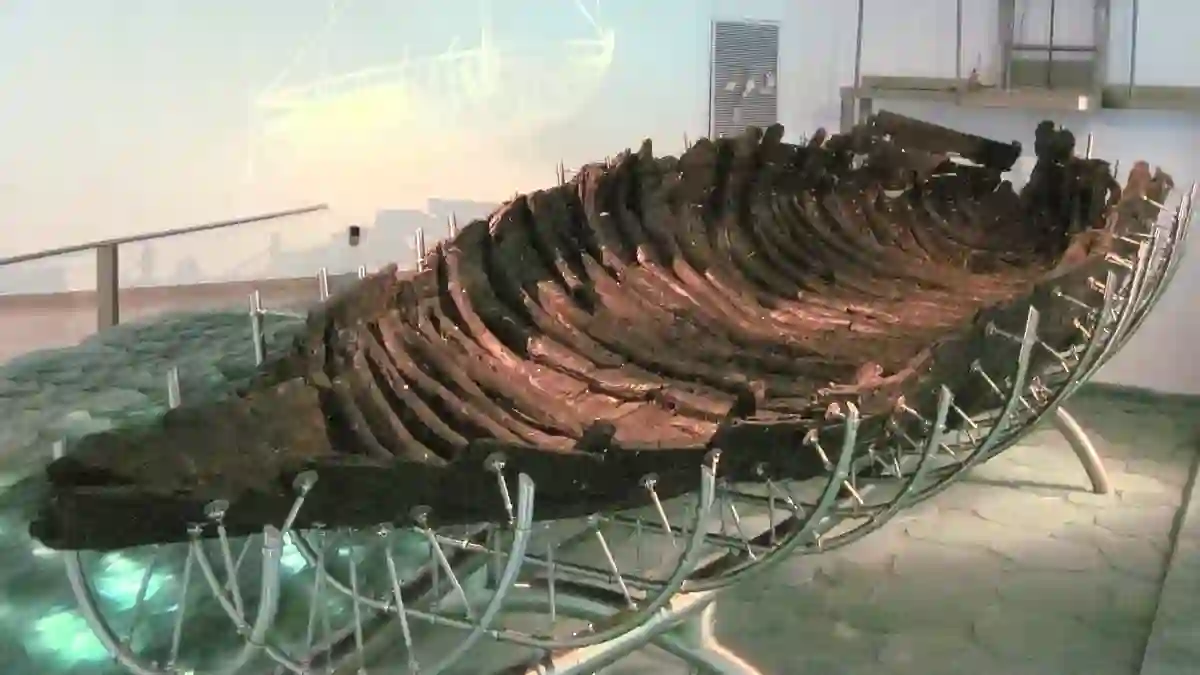In the shimmering waters of the Sea of Galilee, a discovery made decades ago has captured the imagination of historians, archaeologists, and Christian pilgrims alike.
A large wooden boat, nicknamed the “Jesus Boat,” may offer a tangible connection to one of the Bible’s most famous miracles.
This cedar-planked vessel dates back to the first century, the era of Jesus, and is thought to have been built to hold around 12 people—matching the size described in Gospel accounts.
A Chance Discovery in 1986
The boat first came to light during a severe drought in 1986, when the receding waters exposed the shoreline near Magdala.
Brothers Moshe and Yuval Lufan, amateur archaeologists from Kibbutz Ginosar, noticed iron nails sticking out of the mud.
With careful digging, they uncovered an oval-shaped wooden vessel that had been buried for nearly 2,000 years.
Maritime archaeologists confirmed its Roman-era construction, and carbon-14 dating placed it squarely in the first century.
Remarkably, as the boat was uncovered, the skies opened with rain after months of drought, and a double rainbow appeared—an event some tied symbolically to the Gospel story of divine intervention.
Connecting the Boat to Jesus’ Story
Biblical archaeology expert Danny Herman explained that the boat aligns with descriptions in the Gospels:
“It’s a 2,000-year-old boat from the Sea of Galilee, the type mentioned in the Gospels, and sized for about 12 people.
You can actually connect it to one of the most famous stories every Christian knows, the account of Jesus walking on water and calming the storm on the lake.”
The boat’s flat-bottomed design was ideal for fishing, and repairs using cheaper local wood suggest it belonged to humble fishermen—possibly echoing the lives of Jesus’ disciples.
Nearby, archaeologists found a cooking pot and an oil lamp, hinting at night-time use similar to the biblical narrative.
The Gospel Story of Jesus Walking on Water
According to Matthew 14:22-33, Mark 6:45-52, and John 6:16-21, Jesus sent his disciples across the Sea of Galilee after feeding 5,000 people.
A storm arose, waves crashed, and the disciples struggled.
Then, Jesus appeared, walking on water, reassuring them with the words: “Take courage! It is I. Don’t be afraid.”
Peter briefly joined him but began to sink, prompting Jesus to rescue him.
After the storm ceased, the disciples reached Gennesaret, near where the vessel was ultimately discovered thousands of years later.
Herman noted:
“They landed at Gennesaret, the ancient name for Ginosar, almost exactly where the boat was found.”
Preserving a 2,000-Year-Old Treasure
Excavating the boat was a race against time. Winter rains threatened to submerge it again, so over 12 intense days and nights, a team from Kibbutz Ginosar, the Israel Antiquities Authority, and volunteers worked tirelessly.
The wood, preserved in anaerobic silt for centuries, began to crumble when exposed to air.
To save it, archaeologists encased the vessel in fiberglass and insulating foam, floating it to safety.
Preservation continued for 16 years, replacing the mud with a transparent chemical solution to prevent decay while allowing public display.
Since 2000, the boat has been on exhibit at the Yigal Allon Museum in Ginosar, attracting pilgrims, history enthusiasts, and tourists.
“It’s not just an archaeological find; it’s tied to the most famous story of Jesus on the lake,” Herman said.
“While I can’t prove it’s the boat, it’s certainly the type used in that story.”
A Story That Continues to Inspire
Today, the “Jesus Boat” stands as a remarkable bridge between history, archaeology, and faith.
Its discovery continues to inspire curiosity, devotion, and a deeper appreciation for the ancient world that witnessed some of Christianity’s most enduring stories.



